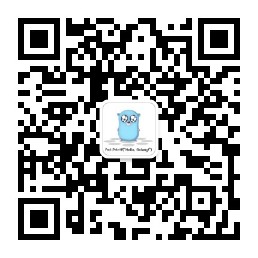python入门008
一、for循环
作用:for循环是因为在循环取值(即遍历值)时for循环比while循环的使用更为简洁
1.for循环语法:
for 变量名 in 可迭代对象: # 此时只需知道可迭代对象可以是字符串\列表\字典,我们之后会专门讲解可迭代对象
代码一
代码二
...
#例1
for item in ['a','b','c']:
print(item)
# 运行结果
a
b
c
# 参照例1来介绍for循环的运行步骤
# 步骤1:从列表['a','b','c']中读出第一个值赋值给item(item=‘a’),然后执行循环体代码
# 步骤2:从列表['a','b','c']中读出第二个值赋值给item(item=‘b’),然后执行循环体代码
# 步骤3: 重复以上过程直到列表中的值读尽
2.应用案例:
案例一:打印数字0-9
for i in range(1,10):#顾头不顾尾1 2 3 4 5 6 7 8 9
print(i)
案例二:遍历字典
for i in ['egon',18,'male','sleep','play']:
print(i)
案例三:for循环嵌套
for i in range(5):
if i == 3:continue
print('外层循环-------',i)
for x in range(5):
print('内层循环----',x)
注意:break 与 continue也可以用于for循环,使用语法同while循环
二、数字类型int与float
1.定义:
整型int的定义
age=10 # 本质age = int(10)
浮点型float的定义
salary=3000.3 # 本质salary=float(3000.3)
# 注意:名字+括号的意思就是调用某个功能,比如
# print(...)调用打印功能
# int(...)调用创建整型数据的功能
# float(...)调用创建浮点型数据的功能
2.类型转换:
int可以将由纯整数构成的字符串直接转换成整型,若包含其他任意非整数符号,则会报错
比如

msg='666'
print(type(msg))
msg1=int(msg)
print(type(msg1))
输出结果:
<class 'str'>
<class 'int'>
3.使用:
数字类型主要就是用来做数学运算与比较运算,因此数字类型除了与运算符结合使用之外,并无需要掌握的内置方法
三、字符串
1.定义:在单引号\双引号\三引号内包含一串字符,列如
name1 = 'jason' # 本质:name = str('任意形式内容')
name2 = "lili" # 本质:name = str("任意形式内容")
name3 = """ricky""" # 本质:name = str("""任意形式内容""")
2.类型转换:str()可以将任意数据类型转换成字符串类型,列如
msg=['egon',18,'male','sleep','play']
print(type(msg))
msg1=str(msg)
print(type(msg1))
输出结果:
<class 'list'>
<class 'str'>
3.使用:
3.1 优先掌握的操作
>>> str1 = 'hello python!'
# 1.按索引取值(正向取,反向取):
# 1.1 正向取(从左往右)
>>> str1[6]
p
# 1.2 反向取(负号表示从右往左)
>>> str1[-4]
h
# 1.3 对于str来说,只能按照索引取值,不能改
>>> str1[0]='H' # 报错TypeError
# 2.切片(顾头不顾尾,步长)
# 2.1 顾头不顾尾:取出索引为0到8的所有字符
>>> str1[0:9]
hello pyt
# 2.2 步长:0:9:2,第三个参数2代表步长,会从0开始,每次累加一个2即可,所以会取出索引0、2、4、6、8的字符
>>> str1[0:9:2]
hlopt
# 2.3 反向切片
>>> str1[::-1] # -1表示从右往左依次取值
!nohtyp olleh
# 3.长度len
# 3.1 获取字符串的长度,即字符的个数,但凡存在于引号内的都算作字符)
>>> len(str1) # 空格也算字符
13
# 4.成员运算 in 和 not in
# 4.1 int:判断hello 是否在 str1里面
>>> 'hello' in str1
True
# 4.2 not in:判断tony 是否不在 str1里面
>>> 'tony' not in str1
True
# 5.strip移除字符串首尾指定的字符(默认移除空格)
# 5.1 括号内不指定字符,默认移除首尾空白字符(空格、\n、\t)
>>> str1 = ' life is short! '
>>> str1.strip()
life is short!
# 5.2 括号内指定字符,移除首尾指定的字符
>>> str2 = '**tony**'
>>> str2.strip('*')
tony
# 6.切分split
# 6.1 括号内不指定字符,默认以空格作为切分符号
>>> str3='hello world'
>>> str3.split()
['hello', 'world']
# 6.2 括号内指定分隔字符,则按照括号内指定的字符切割字符串
>>> str4 = '127.0.0.1'
>>> str4.split('.')
['127', '0', '0', '1'] # 注意:split切割得到的结果是列表数据类型
# 7.循环
>>> str5 = '今天你好吗?'
>>> for line in str5: # 依次取出字符串中每一个字符
... print(line)
...
今
天
你
好
吗
?
3.2需要掌握的操作
1.strip, lstrip, rstrip
>>> str1 = '**tony***'
>>> str1.strip('*') # 移除左右两边的指定字符
'tony'
>>> str1.lstrip('*') # 只移除左边的指定字符
tony***
>>> str1.rstrip('*') # 只移除右边的指定字符
**tony
2.lower(),upper()
>>> str2 = 'My nAme is tonY!'
>>> str2.lower() # 将英文字符串全部变小写
my name is tony!
>>> str2.upper() # 将英文字符串全部变大写
MY NAME IS TONY!
3.startswith,endswith
>>> str3 = 'tony jam'
# startswith()判断字符串是否以括号内指定的字符开头,结果为布尔值True或False
>>> str3.startswith('t')
True
>>> str3.startswith('j')
False
# endswith()判断字符串是否以括号内指定的字符结尾,结果为布尔值True或False
>>> str3.endswith('jam')
True
>>> str3.endswith('tony')
4.格式化输出之format
之前我们使用%s来做字符串的格式化输出操作,在传值时,必须严格按照位置与%s一一对应,而字符串的内置方法format则提供了一种不依赖位置的传值方式
案例
# format括号内在传参数时完全可以打乱顺序,但仍然能指名道姓地为指定的参数传值,name=‘tony’就是传给{name}
>>> str4 = 'my name is {name}, my age is {age}!'.format(age=18,name='tony')
>>> str4
'my name is tony, my age is 18!'
>>> str4 = 'my name is {name}{name}{name}, my age is {name}!'.format(name='tony', age=18)
>>> str4
'my name is tonytonytony, my age is tony!'
5.split,rsplit
# split会按照从左到右的顺序对字符串进行切分,可以指定切割次数
>>> str5='C:/a/b/c/d.txt'
>>> str5.split('/',1)
['C:', 'a/b/c/d.txt']
# rsplit刚好与split相反,从右往左切割,可以指定切割次数
>>> str5='a|b|c'
>>> str5.rsplit('|',1)
['a|b', 'c']
6.join
# 从可迭代对象中取出多个字符串,然后按照指定的分隔符进行拼接,拼接的结果为字符串
>>> '%'.join('hello') # 从字符串'hello'中取出多个字符串,然后按照%作为分隔符号进行拼接
'h%e%l%l%o'
>>> '|'.join(['tony','18','read']) # 从列表中取出多个字符串,然后按照*作为分隔符号进行拼接
'tony|18|read'
7.replace
# 用新的字符替换字符串中旧的字符
>>> str7 = 'my name is tony, my age is 18!' # 将tony的年龄由18岁改成73岁
>>> str7 = str7.replace('18', '73') # 语法:replace('旧内容', '新内容')
>>> str7
my name is tony, my age is 73!
# 可以指定修改的个数
>>> str7 = 'my name is tony, my age is 18!'
>>> str7 = str7.replace('my', 'MY',1) # 只把一个my改为MY
>>> str7
'MY name is tony, my age is 18!'
8.isdigit
# 判断字符串是否是纯数字组成,返回结果为True或False
>>> str8 = '5201314'
>>> str8.isdigit()
True
>>> str8 = '123g123'
>>> str8.isdigit()
False








【推荐】还在用 ECharts 开发大屏?试试这款永久免费的开源 BI 工具!
【推荐】国内首个AI IDE,深度理解中文开发场景,立即下载体验Trae
【推荐】编程新体验,更懂你的AI,立即体验豆包MarsCode编程助手
【推荐】轻量又高性能的 SSH 工具 IShell:AI 加持,快人一步
· .NET 原生驾驭 AI 新基建实战系列:向量数据库的应用与畅想
· 从问题排查到源码分析:ActiveMQ消费端频繁日志刷屏的秘密
· 一次Java后端服务间歇性响应慢的问题排查记录
· dotnet 源代码生成器分析器入门
· ASP.NET Core 模型验证消息的本地化新姿势
· 从零开始开发一个 MCP Server!
· ThreeJs-16智慧城市项目(重磅以及未来发展ai)
· .NET 原生驾驭 AI 新基建实战系列(一):向量数据库的应用与畅想
· Ai满嘴顺口溜,想考研?浪费我几个小时
· Browser-use 详细介绍&使用文档